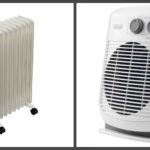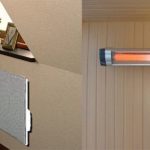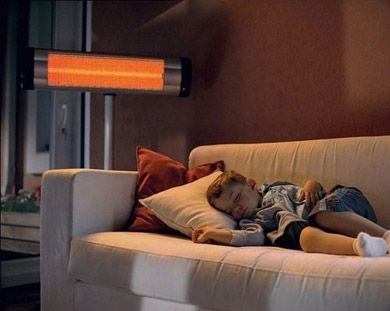Which is better: convector or oil heater?
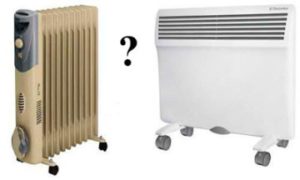 During the autumn cold period, when central heating has not yet been started, many people use “portable” heaters. This is a convenient way to create warmth in one room. The main devices of this type today are converters and oil heaters. Which option is preferable? To answer this question you need to compare two devices.
During the autumn cold period, when central heating has not yet been started, many people use “portable” heaters. This is a convenient way to create warmth in one room. The main devices of this type today are converters and oil heaters. Which option is preferable? To answer this question you need to compare two devices.
The content of the article
Advantages and disadvantages of oil heaters
This type of design is quite simple. It is based on a metal container filled with mineral oil. There are heating elements inside the tank. The use of oil is due to the following reasons:
- Unlike water, the liquid used has a high boiling point. This prevents gases from forming, which reduces the risk of the device exploding if overheated.
- Oil has a low solidification temperature. This will prevent the device from “defrosting”, even if it is kept for a long time at sub-zero temperatures.
- Oil has a high heat capacity. If you heat it up, it will take a long time for such a liquid to cool.
- The liquid used prevents the inner surface of the container from corrosion, which helps to increase the service life of the device.
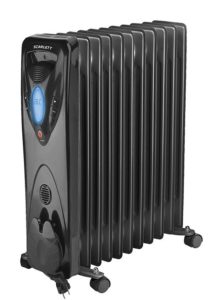 Also, reading the forum, it can be noted that many experts attribute the absence of directed air movements to the positive qualities of an oil heater. The device simply heats the space around it. Air masses do not move, which means there are no drafts.
Also, reading the forum, it can be noted that many experts attribute the absence of directed air movements to the positive qualities of an oil heater. The device simply heats the space around it. Air masses do not move, which means there are no drafts.
The design also has its drawbacks. Firstly, the duration of heating. It takes a long time to bring the oil in the device to operating temperature. Secondly, the heating of the room itself is uneven. Heat, first of all, is felt only in the vicinity of the device itself.
There are other disadvantages:
- microcracks may form on the body, through which oil gradually leaks;
- large size and weight (this disadvantage is partially mitigated by the convenient handles and wheels that the device is equipped with);
- due to its large size, it requires free space;
- The housing becomes hot and may cause burns.
The last drawback can cause more serious consequences. If the owner of the heater wants to dry an object made of flammable material on it, then the risk of fire increases.
Pros and cons of convectors
This device is considered more modern than an oil heater. The converter appeared in homes relatively recently, but has already found its buyers. The principle of operation of the device is quite simple. The converter is connected to the electrical network. As a result of the operation of the heating elements, the temperature of the air around them increases.Warm gases, according to the laws of physics, rise upward, and cold gases take their place. The air in the room is gradually mixed and heated.
The device, regardless of the manufacturer, includes three main components:
- A heating element.
- Control system. It can have both complex electronic “stuffing” and simple mechanical manipulators. In almost all designs, the control system is equipped with temperature control.
- Frame. Serves to protect the control system and heating elements from external influences. In the production of the case, modern materials are used that do not heat up. This reduces the risk of getting burned when coming into contact with the device.
Each design has its own advantages and disadvantages. In the case of a converter, experts attribute the following to the advantages:
- Simplicity. The converter consists of three main elements. The fewer parts, the more reliable the equipment. Simplicity also ensures that there are no complications during operation.
- Thanks to air circulation, converters evenly heat the entire space in the room.
- Several installation options. Almost all modern converter models are equipped with devices for mounting them on walls. In addition, there is always the possibility of installing the structure on the floor.
- Long service life. Manufacturers indicate a minimum service life of ten years.
- Easy to maintain. The consumer does not need to carry out any work to maintain the device in working condition. It is enough to periodically clean the housing from dust and dirt.
- Environmental friendliness. The design contains no components harmful to the environment.
- Compactness.Converters, unlike oil heaters, do not have a coolant container. The device will not take up much free space.
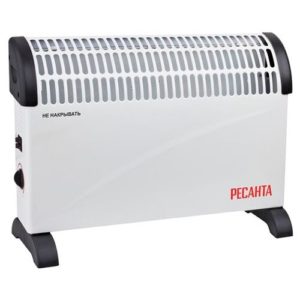 There are other relative advantages. So, the positive side is the great functionality of some models. They have the ability to set the operating mode, on and off times, and so on. But some users consider such “additions” to be disadvantages.
There are other relative advantages. So, the positive side is the great functionality of some models. They have the ability to set the operating mode, on and off times, and so on. But some users consider such “additions” to be disadvantages.
If we talk about the disadvantages of converters, then they are present. Here, energy consumption comes first. This indicator depends entirely on the volume of the room that needs to be heated. The larger it is, the more time and electricity the device will require.
Important! Converters are highly dependent on the volume of the premises. So, they are not effective in rooms with high ceilings.
Disadvantages also include the creation of drafts. When the converter is turned on, air circulation begins. Drafts can not only affect human health, but also create dust in the room.
Which is better: convector or oil heater?
To choose between any two devices, you need to compare them. This is done according to several parameters at once. When it comes to portable heaters, the main thing here is warm-up time and efficiency. It is necessary to take into account other parameters, such as safety, cost and long service life.
Warm-up time
When turning on any heater, the user wants to get heat as quickly as possible. Therefore, such a parameter as the device warm-up time is very important. Here the converter comes first. Immediately after connecting to electricity, it heats up and produces heat. Oil heaters do not have this quality.Such devices need at least 10-15 minutes to start functioning.
But not everything is so simple here. The converter heats up quickly, but the heat from its operation is not immediately felt. It takes time for the air to heat up as it circulates. Oil radiators immediately begin to heat the space around them. To correct this drawback of converters, modern manufacturers equip them with fans. As a result, air circulation, and therefore heating of the room, occurs faster.
Economical
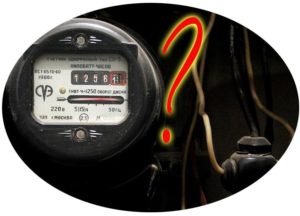 The energy consumed, and therefore the costs, are also important for the consumer. If you turn to specialists, they will point to the converter as a more economical device. Here, with the same power, savings of up to 25 percent are obtained. But there are some nuances here too. An oil heater spends a lot of energy heating the heating element and the coolant itself. This is not the case with a converter. But when turned off, the oil device will continue to heat the surrounding space for quite a long time. When the converter is disconnected from electricity, the air in the room will cool down quickly.
The energy consumed, and therefore the costs, are also important for the consumer. If you turn to specialists, they will point to the converter as a more economical device. Here, with the same power, savings of up to 25 percent are obtained. But there are some nuances here too. An oil heater spends a lot of energy heating the heating element and the coolant itself. This is not the case with a converter. But when turned off, the oil device will continue to heat the surrounding space for quite a long time. When the converter is disconnected from electricity, the air in the room will cool down quickly.
Important! If we talk about efficiency, then we should also take into account the area that the device can heat. A standard oil heater is capable of maintaining a comfortable temperature in a room up to 25 square meters. If the room is larger, then several devices will be required.
Converters, thanks to the peculiarities of air heating, are able to cope with a larger area. One such device creates and maintains a comfortable temperature in a room of up to one hundred square meters. The fewer heaters, the less electricity consumption.
Converter manufacturers offer a system by which you can easily select the desired power of the device depending on the area. One kilowatt is needed for every ten square meters. But such calculations are not entirely correct. When choosing the power of the device, you need to take other parameters into account. The calculations include the height of the ceilings in the room, the number of windows and their location relative to the cardinal points, and so on.
Comfort in use
Both devices are easy to use. It is enough to install them in the desired room and connect to electricity. The disadvantage in this regard is very noticeable in oil heaters. Such devices weigh a lot, which makes them difficult to move, especially when hot.
The converter is more compact. It is easy to move, and the device cools down quickly when turned off. Also, modern converters are equipped with a “smart” control system. It is possible to remotely turn the device on and off, as well as change temperature conditions.
There is one fact that speaks in favor of oil heaters. Converters can be noisy during operation. In addition, when you first turn on the device, it may emit an unpleasant odor.
Safety
Here the converter comes first. Modern designs are equipped with all security systems. In case of danger or overheating, the converter will turn off. The same systems are installed on oil heaters. The danger from their use is associated with the risk of fire if the user dries things on it. Also, oil heaters get very hot and you can get burned if you touch them.
Lifetime
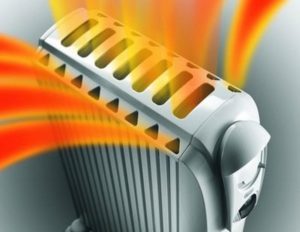 How long a heater will last largely depends on the quality of its production.If you take proven brands, then converters come first. The manufacturer provides a minimum of ten years of guaranteed operation.
How long a heater will last largely depends on the quality of its production.If you take proven brands, then converters come first. The manufacturer provides a minimum of ten years of guaranteed operation.
Important! In the case of an oil heater, the service life does not reach ten years. This is due to design features.
The heater is a container with oil inside. There are seams, which are the weak point of the structure. Over time, microscopic cracks appear through which coolant gradually leaks and the heater fails.
Price indicator
A lot depends on the brand here. If we take simple models, then oil heaters win. Their cost is affordable to almost any group of buyers. But such models fail faster, so the savings are invisible.
Modern technologies make it possible to reduce the cost of any device. Today in specialized stores you can find simple converters of sufficient power at a price equal to, and sometimes less than, that of oil heaters.


